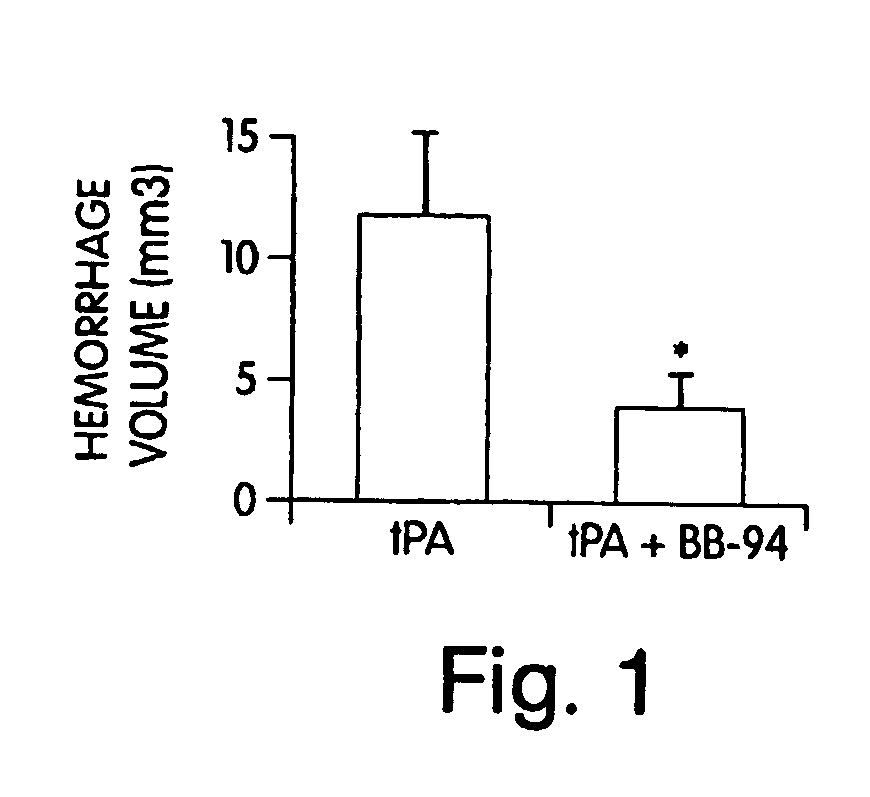Methods and compositions for protection against thrombolysis associated reperfusion injury
a technology of thrombolysis and reperfusion injury, applied in the field of methods and compositions for protecting against thrombolysis associated reperfusion injury, can solve the problems of tpa-induced hemorrhage and edema, significant neurologic disability, and 200,000 deaths, and achieve the effects of reducing the side effects of tissue plasminogen activator (tpa) and urokinase plasminogen activator (upa), preventing and treating
- Summary
- Abstract
- Description
- Claims
- Application Information
AI Technical Summary
Benefits of technology
Problems solved by technology
Method used
Image
Examples
example 1
Inhibition of MMP Reduces tPA-Induced Hemorrhage in Rat Embolic Focal Ischemia
[0117] The involvement of MMPs in hemorrhagic transformation was investigated because these proteases can degrade matrix substrates that weaken blood vessel integrity. The quantitative rat model of tPA-induced hemorrhage that we developed was used to examine the role of MMPs in hemorrhagic transformation. Rats were subjected to embolic (clot-based) focal ischemia, then treated with either tPA alone (10 mg / kg iv, 6 hrs post-ischemia) or with tPA plus two doses of 50 mg / kg ip of the broad spectrum MMP inhibitor batimastat (BB-94, which was donated by British Biotech, Oxford, G.B.). Hemorrhage volumes were quantified at 24 hrs with hemoglobin spectrophotometry in perfused brain. tPA-induced hemorrhage volumes were significantly decreased by co-treatment with BB-94 (FIG. 1). These data indicated that MMPs mediate tPA-induced hemorrhagic transformation after ischemic stroke (Sumii, T., and E. H. Lo, Stroke 33...
PUM
| Property | Measurement | Unit |
|---|---|---|
| temperatures | aaaaa | aaaaa |
| density | aaaaa | aaaaa |
| volumes | aaaaa | aaaaa |
Abstract
Description
Claims
Application Information
 Login to View More
Login to View More - R&D
- Intellectual Property
- Life Sciences
- Materials
- Tech Scout
- Unparalleled Data Quality
- Higher Quality Content
- 60% Fewer Hallucinations
Browse by: Latest US Patents, China's latest patents, Technical Efficacy Thesaurus, Application Domain, Technology Topic, Popular Technical Reports.
© 2025 PatSnap. All rights reserved.Legal|Privacy policy|Modern Slavery Act Transparency Statement|Sitemap|About US| Contact US: help@patsnap.com



